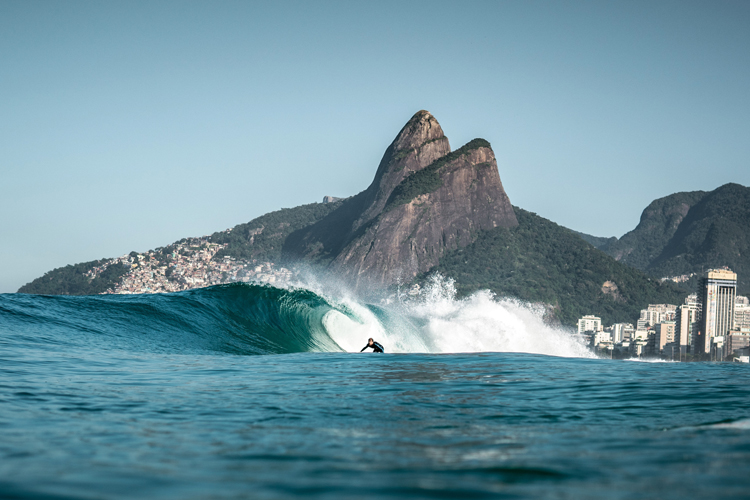Often dubbed as "Cidade Maravilhosa" - the Marvelous City - Rio de Janeiro is as radiant as its tropical sun. And so are its waves.
The vibrant metropolis, the birthplace of samba and bossa nova, is framed by soft sandy beaches, the emerald Atlantic, and towering peaks such as the iconic Corcovado and Pão de Açúcar - "Sugarloaf" - mountains.
However, Rio's allure extends far beyond its lively carnivals and beautiful landscapes and is also home to a robust surf culture that lures wave riders from around the globe.
Rio de Janeiro is a city of intense contrasts, blending natural beauty with urban charm.
Located on the Atlantic Ocean, in the southeastern part of the tropical zone of South America, it is the capital of the state of Rio de Janeiro, Brazil.
It has gained worldwide recognition as one of the most beautiful and exciting urban centers, offering a unique blend of location, architecture, inhabitants, and lifestyle.
The city was named by Portuguese navigators.
They arrived on January 1, 1502, and mistook the entrance of the bay for a river, hence "Rio" (Portuguese for "river") and "Janeiro" (the word for "January").
From being a colonial capital in 1763 to the capital of independent Brazil in 1960, Rio has thrived as a commercial, financial, and tourist magnet.
Rio de Janeiro is well known for its beautiful beaches, peaks, ridges, and hills, all partly covered by tropical forests.
It serves as a center of leisure for both Brazilian and foreign tourists.
The city's festive reputation is best displayed during the annual pre-Lenten Carnival, where music, singing, parties, balls, and street parades of brilliantly costumed dancers performing to samba rhythms enliven the city day and night.
Moreover, Rio is an important economic center with activities ranging from industry and national and international trade to administration, banking, education, culture, and research.
But how has surfing evolved and become so popular in the Marvelous City?
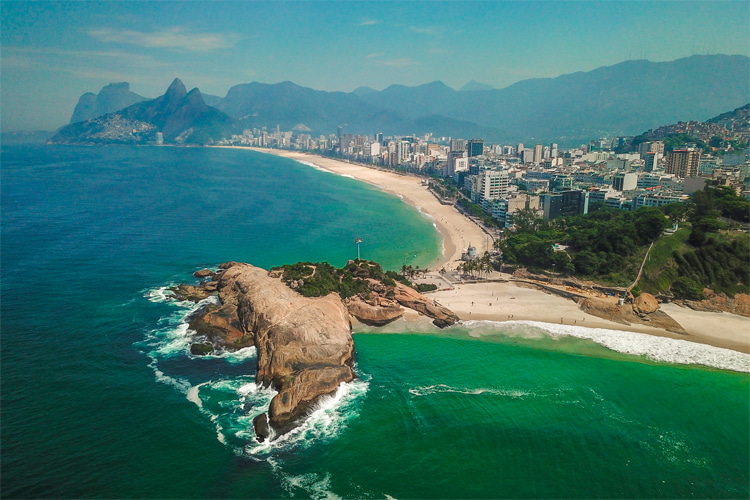
A Rich Surf History
In the mid-20th century, the beaches of Rio de Janeiro started to reverberate with the rhythms of a new cultural import - surfing.
The sport first washed up on Brazilian sands in the 1930s, thanks to the pioneering efforts of American Thomas Rittscher and local enthusiasts Osmar Gonçalves and Juá Hafers on the beaches of Baixada Santista, near São Paulo.
They rode the waves on handmade wooden boards that could weigh up to 176 pounds (80 kilograms).
Surfing made its Rio debut in the 1940s, lured by the city's perfect waves and vibrant beach culture.
American soldiers stationed in Brazil were among the first to explore the surf potential of Rio's coast, particularly the now iconic Arpoador.
By the 1950s, Rio's homegrown surfers, many of whom were also spearfishermen, were making their mark on the sport.
Among these were Arduíno Colassanti, Irencyr Beltrão, Paulo Preguiça, and Jorge Paulo Lemann.
Colassanti, a charismatic figure, was the country's first surf celebrity, dating famous actresses like Leila Diniz, while Lemann would later become one of Brazil's wealthiest men.
In the early days of Rio's surf scene, surfboard shapers like Persegue, Betinho Lustosa, and Walcyr created their own boards out of necessity, as fiberglass boards were scarce.
Local ingenuity led to the creation of the "madeirite," a board made of plywood.
Irencyr Brandão even used a friend's factory on Governor's Island to manufacture these plywood boards, which were unsuitable for floating and required surfers to use swim fins.
By 1964, surfing had firmly captured the Brazilian imagination, with the magazine "O Cruzeiro" hailing it as the "big novelty of the summer."
That same year, Australian physical education teacher Peter Troy mesmerized Arpoador's surfers with his innovative wave-riding style, showcasing maneuvers never before seen in Brazil and giving a new direction to the country's surf scene.
The following year marked the establishment of the Carioca Surf Federation, as well as the opening of the city's first fiberglass surfboard factory, São Conrado Surfboards.
Despite the military dictatorship's view of surfers as dangerous activists linked to countercultural movements, surfing grew in popularity and became a peaceful form of protest against the oppressive regime.
The epicenter of this cultural effervescence was Ipanema Pier, which became a haven for surfers, artists, psychoanalysts, and scholars, all mixing together.
It was here that surfers such as Rico, Daniel Friedman, Pepê Lopes, Ricardo Bocão, Fernando Fedoca Lima, and Petit made their mark, often breaking the law which prohibited surfing between 8 am and 2 pm.
This vibrant scene was frequented by some of Brazil's foremost artists, including Gal Costa, Caetano Veloso, Chacal, Jards Macalé, Jorge Ben, Jorge Mautner, José Wilker, and Luiz Melodia.
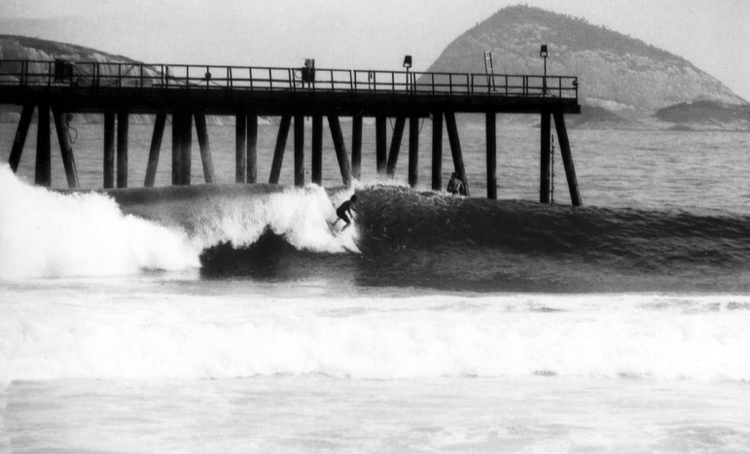
In the late 1970s and 1980s, surfing in Brazil began to gain significant recognition.
Rico de Souza, a champion surfer, shaper, and ambassador of surfing in Brazil, launched a surfboard company - Rico Surfboards.
At the same time, Caetano Veloso immortalized Petit and his dragon tattoo in the song "Menino do Rio."
Pepê and Friedman won the Waimea 5000, a stage of the World Circuit held at Arpoador Beach, in 1976 and 1977.
Bocão became the first Brazilian to participate in the traditional Eddie Aikau big wave competition and was instrumental in introducing extreme sports to the media.
The 1980s saw the explosion of the sport in the country, with media support and a shift in society's perception of surfing as a serious and professional activity.
The Brazilian surf scene is currently at its zenith, with many young talents competing globally.
Among the notable figures in Rio's surfing history is big wave surfer Maya Gabeira.
Known for her persistence and courage, Gabeira rode a 73.5-foot (22.4 meters) wave in Nazaré, earning her a place in the Guinness Book of World Records.
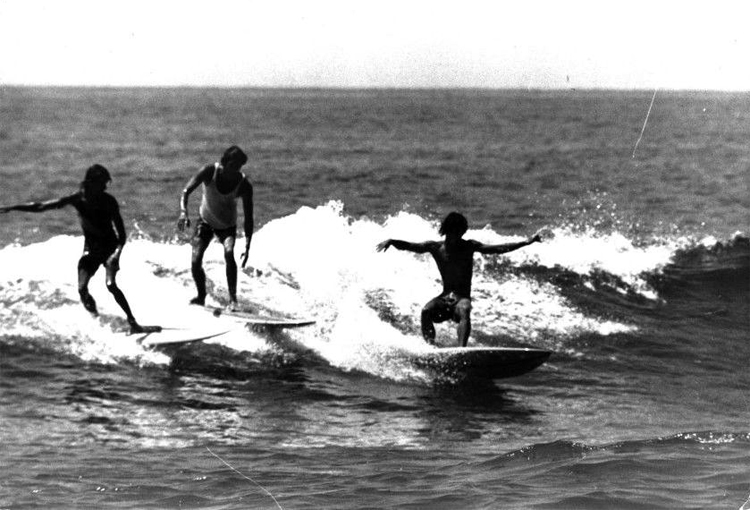
Geography
Situated on Brazil's southeastern coastline, Rio de Janeiro's curvaceous contours boast over 30 miles (50 kilometers) of shoreline.
This extensive coastline is blessed by the regular swells of the Atlantic Ocean, creating perfect conditions for surfing.
Its beaches, such as Copacabana and Ipanema, are renowned worldwide, but the lesser-known surf spots offer the most memorable experiences.
The city boasts a coastline rich with punchy, user-friendly beach breaks and tropical temperatures year-round.
Furthermore, the city has numerous surf setups, from thumping beach breaks and playful shoreys to slabs and Championship Tour (CT) venue Saquarema.
Other than surfing, Rio offers a ton of epic non-surfing activities.
You can explore the iconic Christ the Redeemer statue, soak in the beauty of the Botanical Garden, or visit the Museum of Tomorrow.
If you are more of a nature lover, you can enjoy a hike to Sugarloaf Mountain or explore the Tijuca National Park.
If you want to delve into the culture of Brazil, you can visit the Selaron Steps, or if you are a football fan, visit the Maracanã Stadium.
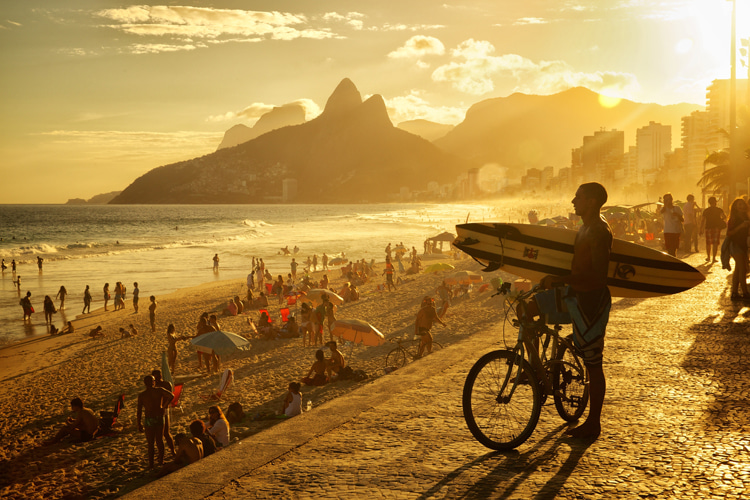
Weather
Rio de Janeiro's tropical savanna climate translates into warm weather year-round, with temperatures ranging from 77-86 °F (25-30 °C).
Rainfall, though prevalent, is unevenly distributed throughout the year, with the heaviest downpours occurring from December to March.
Onshore winds prevail, especially during the afternoons, but the mornings often offer glassy conditions.
The Atlantic Ocean water temperature stays invitingly warm, oscillating between 70-80 °F (21-27 °C).
The city typically enjoys its largest swells during the southern hemisphere's winter, from April to October.
However, Rio has consistent swells year-round, and waves will be in the 2-4-foot range daily.
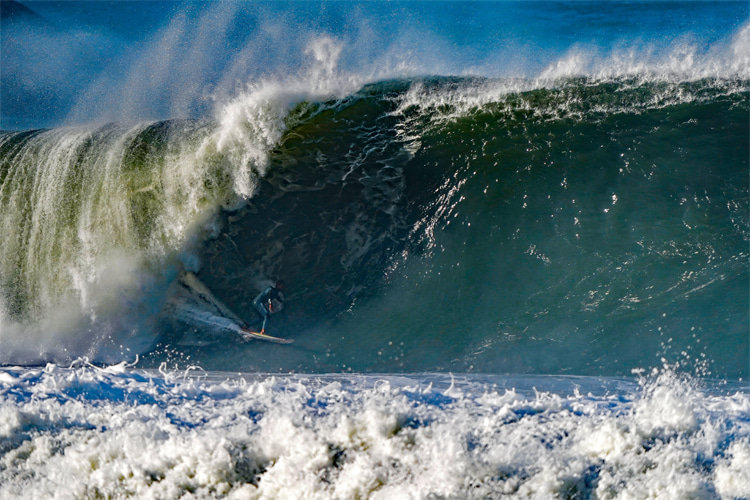
Rio de Janeiro Surf Spots
Itacoatiara
Itacoatiara, located in neighboring Niterói, is renowned for its powerful waves. It's a paradise for bodyboarders, and on its big days, you'll find experienced surfers testing their mettle against the fierce Atlantic swells in the infamous Laje do Shock.
Prainha
Prainha is a secluded haven situated at the city's edge. It's a natural reserve and offers consistent barrels with south swells and east winds.
Praia da Macumba
Praia da Macumba, located near Prainha, serves up regular swells and caters to all levels of surfers. The point break at the far right, known as "Canto do Macumba," is a favored spot for longboarders.
Arpoador
Arpoador is an urban beach wedged between Copacabana and Ipanema. It's famous for consistent swells, and its wave, called "Arpex," is known for its powerful lefts.
Grumari
Grumari is another pristine beach located within an environmental reserve. It offers great waves, especially for experienced surfers. The crowd is usually thin, providing a serene surfing experience.
Canto do Leblon
Canto do Leblon is located at the far end of Leblon Beach and serves up a fun left-hander that breaks over a sandy bottom, perfect for intermediate surfers.
Ponta Negra
Ponta Negra, situated in Maricá, offers quality waves suitable for beginner and advanced surfers.
Ipanema
Ipanema is one of Rio's iconic beaches. Although crowded, it can produce decent surf with the right conditions. The Arpoador end is the most popular among surfers.
Saquarema
Saquarema, a small town outside Rio, is often called the "Brazilian Hawaii" due to its high-quality waves. It's a regular host of the Championship Tour, a testament to its excellent conditions.
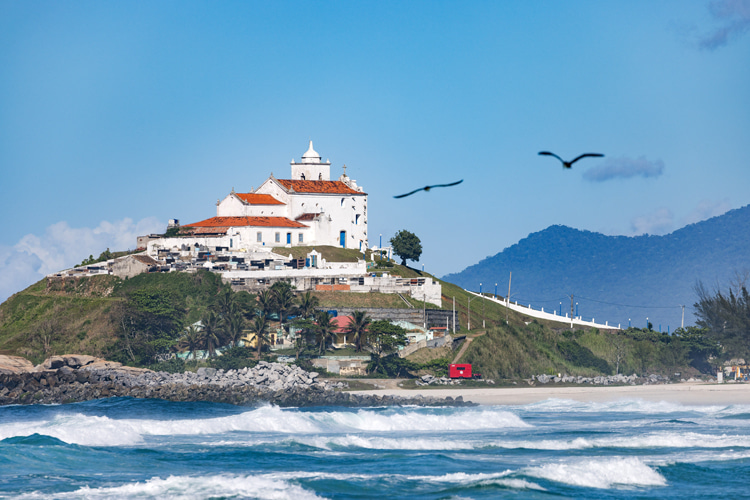
Dangers and Hazards
While surfing in Rio can be an exhilarating experience, it's essential to stay vigilant to potential hazards.
The water can sometimes be polluted, especially after heavy rainfall, causing risks of infection.
Rip currents are also common, particularly at spots like Prainha and Itacoatiara.
Localism can be an issue at crowded breaks like Arpoador and Saquarema. Demonstrating respect towards local surfers and understanding surfing etiquette can mitigate conflict.
As with any major city, crime can be a concern.
It's advised to leave valuables at your accommodation and stay alert to your surroundings, particularly in less crowded areas.
Lastly, while marine life in Rio is generally harmless, encounters with stingrays and jellyfish are possible.
